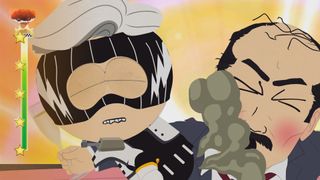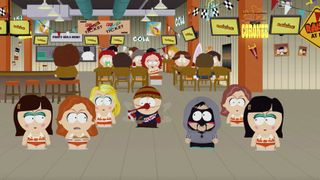South Park: The Fractured But Whole is a far better RPG than the first
Hands-on with the game's opening hours.

I was listening to an interview with South Park's co-creator Trey Parker recently where he discussed the idea that they're only one terribly offensive episode away from being run out of entertainment forever. "The witch hunt is coming. Our day is coming. One of these days, out of nowhere, we’ll do something and they’ll go, ‘How dare you!’—and we’ll be done," Parker says, half-jokingly. "But what people don’t realise is, we’ve thought this for 20 years. We’ve been ready for it. Our bags are packed in the car and we’re ready to go back to Colorado. And it’s cool, man."
The thing is, though, if that pitchfork-wielding didn't happen when players fought the mutated, aborted Nazi foetus of Khloe Kardashian in 2014's The Stick of Truth, will it ever happen? So much of the wider conversation around South Park is about controversial moments or episodes, but my four hours with The Fractured But Whole dialled in on what's actually appealing about South Park, when it's on great form: the town and its cast are...kind of nice? The shocking stuff is maybe 10% of the reason I enjoy the show, and I'd wager it's the same for most viewers. This is also a highly enjoyable world to step into, full of ridiculous, awful and somehow winning characters. The Fractured But Whole captures that as well as the original game did.

My worry with this sequel was that it'd inevitably feel too similar to The Stick of Truth, being unavoidably set in the same location. But a shift to a more sidequest-led structure, combined with slightly deeper RPG systems, make a significant difference. If the first game was riffing on JRPGs with its light interpretation of turn-based combat, this does the same for tactical RPGs. Positioning is important: all characters have a movement phase, and every attack has an area of effect. Some attacks can push an enemy back a square, causing damage if there's another enemy behind them, and ending a turn on the wrong square can put a party member in danger.
This means that battles take a lot longer than they did in The Stick of Truth, but I was definitely guilty of just hammering the A button on my controller by the end of that game, so I respect any attempt to further engage the player. There are other new RPG trappings here, too: a simple accessory system and some light crafting for health items, new clothes and other trinkets. All of this is accessed via your in-game phone, which is like an expanded version of the Facebook functionality of the first game. Even with these additions, The Fractured But Whole is still way breezier than other RPGs.
The new classes successfully add variety, too. At the start, Cartman as his superhero persona, The Coon, asks you to pick a class: speedster, brutalist and blaster (basically speedy, heavy and ranged). You're then relayed your horrifying origin story by The Coon, which is when your character, the new kid from The Stick of Truth, sees your parents have sex.

There are some oddly hefty restrictions on what I can talk about from my hands-on, mostly for spoiler reasons, including some of the funniest stuff in the demo. The jokes about superheroes and franchises don't really do it for me, but it's a nice unifying theme for the combat classes and story. The expanded sidequest system is where a lot of the bigger laughs come from, since they tend to revolve around one specific character in the world, like Mr Mackey or Randy Marsh.
These quests are very fetch-y—they're mostly an excuse for good jokes and cutscenes, or low hanging fruit gags like priests trying to molest the new kid. The critical path is pretty loose—the game will tell you when you can advance the story, but you're constantly encouraged to meet up with side characters, which I like.
PC Gamer Newsletter
Sign up to get the best content of the week, and great gaming deals, as picked by the editors.
"Because South Park and Matt and Trey had so many great ideas for this game, it really did come down to, 'how much can we get done, and if it's all done, [are we] going to get it in the game'?" explains Kimberly Weigend, associate producer, when I ask about the change in structure. "And that has probably led to not having a very obvious critical path. They wanted to have it be more exploratory, and have you get to know the characters again, but in this superhero persona."

Despite feeling similar to explore, South Park has changed a bit. Some of the results of gentrification in season 19 are apparent in the rebranded Skeeters Wine Bar, for example. There's also a mall under construction, and I'm hoping for more off-the-map excursions like the Canada sequence in The Stick of Truth.
Ubisoft assures me there's lots more content in this one, thanks in part to the way they can put new characters into the game. There's a noticeable upsurge in production values between The Fractured But Whole and The Stick of Truth, helped enormously by the fact that the developers can now import all of the show's assets as is for the first time. As a result, there are references here going right up to season 20.
The Fractured But Whole won't be too complex, trying as it is to please both show fans and RPG players. But the classes and tactical RPG combat is really working out for this follow-up—and even if you're just planning on picking it up to enjoy the jokes, there are plenty of top drawer South Park moments in here.
Most Popular



